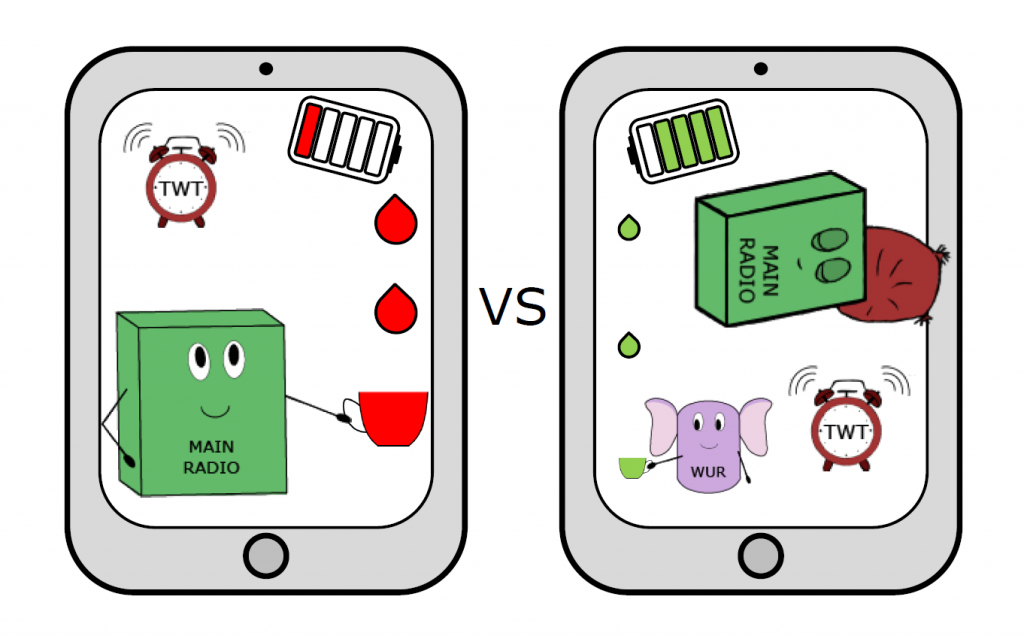WNL publishes energy-saving strategies for Wi-Fi in IEEE Access

The article “On the Joint Usage of Target Wake Time and 802.11ba Wake-Up Radio” by Andrey Lyakhov, Evgeny Khorov, Dmitry Bankov, and Ekaterina Stepanova has been published the IEEE Access journal.
The work reviews the new IEEE 802.11ba standard amendment to the Wi-Fi technology. The amendment will allow battery-powered devices to exchange data, spending a minimum of energy.
The article publishing is timed to coincide with the release of the 802.11ba amendment itself, which is expected in March 2021. One of the goals of the article is to comprehensively describe the operation of a fundamentally new energy-saving mechanism for Wi-Fi – Wake-Up Radio (WUR). Until now, the Target Wake Time (TWT) method has been used to conserve energy in Wi-Fi devices, which periodically turns off the transceiver. Also, energy can be saved by reducing collisions through channel reservation or scheduling. WUR mechanism complements these methods to achieve better results not only in terms of energy-saving but also in terms of latency. WUR is an additional receiver that consumes hundreds of times less power and controls the main transceiver by switching it on and off.
The article presents a number of mathematical models showing that, compared with previous methods, the use of WUR allows energy-saving stations to significantly reduce the delay in frame delivery. WUR promptly warns the station about the beginning of message reception, while only slightly increasing the station’s power consumption. At the same time, without using WUR, a similar delay can be achieved only by multiplying the power consumption.
In the article, the authors also propose a method to reduce the power consumption of the WUR receiver taking into account the clock impairments. If the clocks on the station and the access point do not match, the WUR must be turned on for a longer time, so as not to miss the data transmission due to loss of synchronization. The article proposes a method to efficiently save the station’s energy by enhancing the data sending procedure with synchronization frames from the 802.11ba standard. First, the station can control its WUR activity period depending on the clock deviation. Second, the access point can send multiple synchronization frames to increase the chances of delivering at least one frame during the WUR period. The proposed scheme is especially efficient when used in conjunction with the TWT mechanism: a station, having actual information about the current time, can additionally switch to sleep mode between the moments of synchronization and the expected frame reception.
The article is published in IEEE Access, a first quartile (Q1) journal. The journal has won numerous awards and its articles are in IEEE Xplore’s Most Popular downloads every month. IEEE Access is an open-access journal, meaning that anyone can freely familiarize themselves with the articles published in it.
Wireless Networks Lab is a ‘Megagrant’ lab established in 2017 around the project on Cloudified Wireless Networks for 5G and beyond, led by Prof. Ian F. Akyildiz. The team regularly reports at leading IEEE conferences, runs industrial projects and contributes to the standardization of wireless networks.
